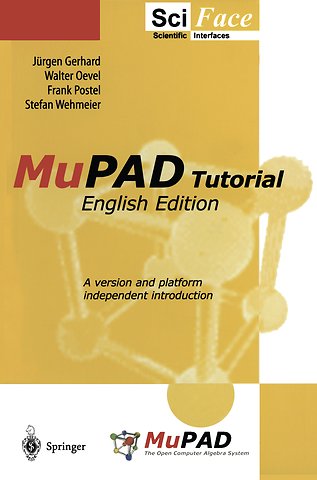MuPAD Tutorial
Samenvatting
This book explains the basic use of the software package called MuPAD and gives an insight into the power of the system. M u PAD is a so-called computer algebra system, which is developed mainly at the University of Paderborn in Germany. This introduction addresses mathematicians, engineers, computer scientists, natural scientists, and more generally all those in need of mathematical computations for their education or their profession. Generally speaking, this book addresses anybody who wants to use the power of a modern computer algebra package. There are two ways to use a computer algebra system. On the one hand, you may use the mathematical knowledge it incorporates by calling system functions interactively. For example, you can compute symbolic integrals, or generate and invert matrices, by calling appro priate functions. They comprise the system's mathematical intelligence and may implement sophisticated algorithms. Chapters 2 through 15 discuss this way of using MuPAD. On the other hand, with the help of MuPAD's programming lan guage you can easily add functionality to the system by implementing your own algorithms as MuPAD procedures. This is useful for special purpose applications if no appropriate system functions exist. Chap ters 16 through 18 are an introduction to programming in MuPAD. You can now read this book in the standard way "linearly" from the first to the last page. However, there are reasons to proceed otherwise.
Specificaties
Inhoudsopgave
Net verschenen
Rubrieken
- aanbestedingsrecht
- aansprakelijkheids- en verzekeringsrecht
- accountancy
- algemeen juridisch
- arbeidsrecht
- bank- en effectenrecht
- bestuursrecht
- bouwrecht
- burgerlijk recht en procesrecht
- europees-internationaal recht
- fiscaal recht
- gezondheidsrecht
- insolventierecht
- intellectuele eigendom en ict-recht
- management
- mens en maatschappij
- milieu- en omgevingsrecht
- notarieel recht
- ondernemingsrecht
- pensioenrecht
- personen- en familierecht
- sociale zekerheidsrecht
- staatsrecht
- strafrecht en criminologie
- vastgoed- en huurrecht
- vreemdelingenrecht
